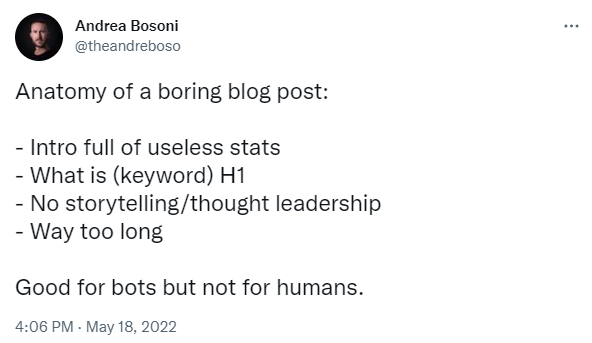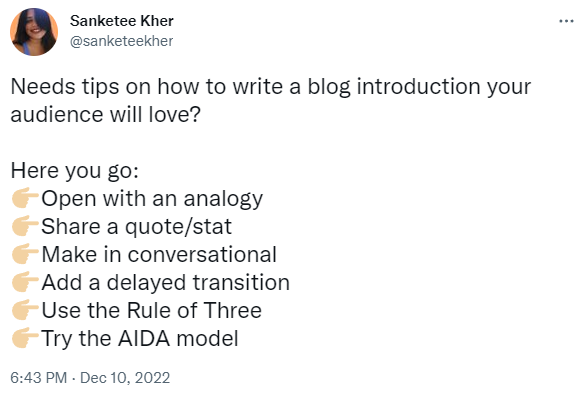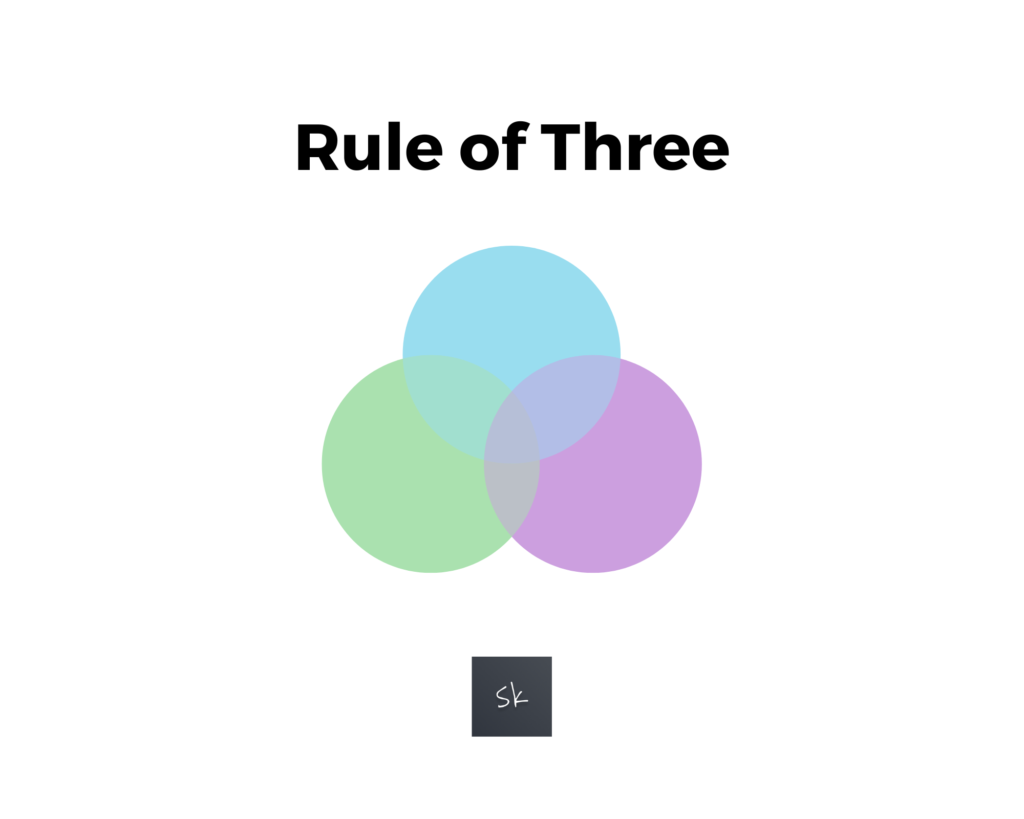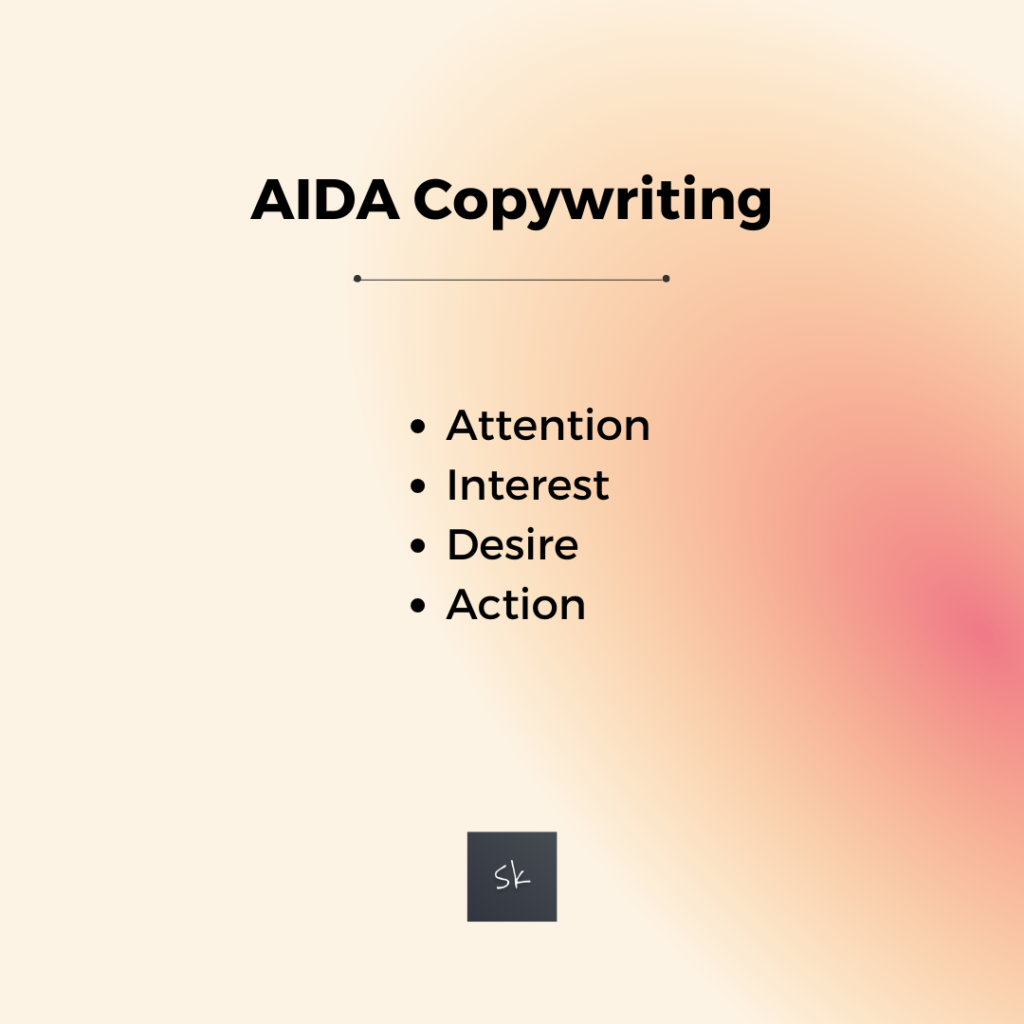Writing a B2B blog intro is quite like fishing—you need to hook your audience from the get-go, and then reel them in with helpful insights. The blog introduction also needs to convince readers that your content can fulfill their search intent. If this wasn’t daunting enough, you have to write for Google to improve your rankings.
Let’s be real—you can’t achieve any of this by throwing in boring stats, business jargon, and generic statements.
Luckily, I have some tips for you on how to write a blog introduction that doesn’t bore your readers.
But let’s start with the most important question–
Table of Contents
Why a captivating B2B blog intro is non-negotiable
The reason a reader has clicked on your blog isn’t apparent instantly. Instead, the introduction is the first thing they see. So, you need to hold their attention with an intriguing introduction that makes them want to spend more than the average 37 seconds on an article.
Also, an interesting introduction that addresses the audience’s pain points makes them protagonists, which automatically makes the problem the antagonist. By solving their concerns with your content, you become an empathetic brand that cares for its customers.

Source: Andrea Bosoni
6 tips on how to write a blog introduction that wows readers

Source: Sanketee Kher
Open with an analogy
An analogy is a logical argument you can use to persuade your audience. So, when you are writing for a B2B audience, hook your audience with a statement that creates strong imagery in their head.
You can even use a metaphor to help your cause. Why? Metaphors are an example of a rhetorical device employed to create a sense of understanding and connection between the new information and the subject. It helps the audience build a relationship with your content piece and the message being told.
When you use these tools at the right place and time, you might just turn a website visitor into a subscriber.
Share a quote or statistic
Did you know 77% of internet users read blogs often? So, you can afford to lose this audience.
A relevant quote from a respected leader or a crucial statistic that helps you illustrate the crux of your B2B blog might be the strong opening you need to hold your audience’s attention.
Statistics and quotes make for a great B2B blog intro, especially if you are trying to do a more in-depth analysis of a topic. Quotes from reputable professionals in the topic’s field can add more credibility to your blog and statistics are a great way to show your audience your research.
Also, if you write your blog introduction before the rest of the blog, such information can give you a good idea of how to capture the essence of your topic.
Make it conversational by asking a question
Questions are a great way to make a B2B blog introduction more conversational and engaging. When used strategically, questions can help to draw readers in and encourage dialogue. Asking questions that make readers think, such as “What challenges are you currently facing in your industry?” or “What do you think are the most important trends in your sector?” can spark an interesting conversation and lead to valuable insights.
Additionally, questions can create an interactive experience, such as inviting readers to share their experiences or ask their own questions in the comments section. Doing so will make the blog introduction more engaging, and ultimately help to build relationships with readers.
Include a delayed transition
When writing an introduction for a blog post, it’s important to grab the reader’s attention and hold it until the end.
One way to do this is to use a delayed transition in your blog intro, where you introduce a topic or idea at the beginning and then delay discussing it in depth until later in the article. This can help to keep the reader engaged in what you have to say.
Let’s say you’re writing a blog post for a B2B audience on email marketing. In the introduction, you could start by mentioning the importance of email marketing for businesses and then delay discussing the specific benefits and strategies until later in the introduction. This way, you hook the reader with a relevant and interesting topic, and then keep them engaged by building up to a more detailed discussion.
Here’s an example of a delayed transition in action:
“As businesses continue to evolve, it’s becoming increasingly important to implement effective marketing strategies to reach and engage with potential customers.
One tactic that has proven to be highly effective for businesses is email marketing.
But before we dive into the specific benefits and strategies of email marketing, let’s first take a step back and look at why it’s such a valuable tool for businesses.”
Use the Rule of Three

The Rule of Three is a writing principle that suggests that things that come in threes are inherently more satisfying, effective, and engaging than other numbers of things. This principle can apply to writing a B2B blog introduction to make it more interesting for the reader.
To use the Rule of Three in your B2B blog introduction, start by identifying three key points or ideas you want to highlight in your post. These could be the primary benefits of a product or service, the key takeaways from a case study, or the most important reasons your audience should care about your blog post. Once you have identified your three key points, incorporate them to introduce your blog post.
Here is an example of how the Rule of Three could be used in a B2B blog introduction:
“In this blog post, we’ll discuss the importance of data-driven decision-making for businesses. We’ll cover key reasons businesses should prioritize using data to inform their decisions—improved accuracy, better decision-making, and increased efficiency.”
Actually, it doesn’t even need to be complex.
Have you wondered why Marc Antony’s speech was so powerful? It’s because he uses the Rule of Three — “Friends, Romans, countrymen” or even Julius Caesar — “I came, I saw, I conquered.”
Some other common examples are:
- Mind, body, spirit
- Blood, sweat, and tears
- Stop, drop, and roll
Even movies use this rule for their titles:
- The Chronicles of Narnia: The Lion, the Witch, and the Wardrobe
- Vicky Cristina Barcelona
Apply the AIDA model of copywriting

The AIDA model is a framework for writing copy that captures the reader’s attention and convinces them to take the desired action. The acronym AIDA stands for:
- Attention
- Interest
- Desire
- Action
Each of these elements plays a critical role in the effectiveness of copywriting.
Writers often use the AIDA model as a guide for structuring their copy, trying to lead the reader through each of these stages and ultimately convincing them to take action. It could be purchasing a product or even signing up for a service.
In terms of structure,
- The AIDA model suggests copy should begin by grabbing the reader’s attention with a compelling headline or opening statement.
- This is followed by a discussion of the benefits or features of the product or service designed to pique the reader’s interest and curiosity.
- The next step is to build a desire for the product or service by highlighting its unique selling points and explaining why it is the best solution for the reader’s needs or desires.
- Finally, the copy should include a clear call-to-action (CTA), telling the reader exactly what they need to do to take advantage of the product or service.
Here is an example of a B2B blog introduction that uses the AIDA model:
“Attention: As businesses continue to face growing competition and changing market conditions, it’s more important than ever to have a strong online presence.
Interest: But what does it take to build a successful website that can attract and retain customers?
Desire: In this blog post, we’ll reveal the top 5 essential elements of a high-performing B2B website, including a user-friendly design, interesting content, and a clear call to action.
Action: By the end of this post, you’ll have a better understanding of what it takes to create a website that drives results for your business. So let’s get started!”
With these 6 tips on how to write a blog introduction in your writing arsenal, you can start creating great blog introductions.
Improve your metrics with a strong B2B blog intro
Once you learn how to write a blog introduction, you’ll be in a better position to keep your audience hooked. Also, your average session duration, bounce rate, and traffic on these pages might increase.
If you’re a SaaS company looking to create meaningful content for your audience, I’d love to chat.
FAQs
How long should a blog introduction be?
The ideal length for a blog introduction is between 100-200 words. This length helps you get to the point by addressing the purpose of the blog post immediately.
How do you write a blog hook?
To write a blog hook, you can write an anecdote, share an example, use a relatable phrase or ask your audience a question. You can even share a joke or write an educational hook.
How can I make my blog interesting?
Make your blog interesting by telling a story. You can do this by providing a proper structure, having a clear narrative, writing short sentences, and removing all fluff.
How long should a B2B blog be?
While a standard blog can be between 400-600 words, B2B long-form blogs that have 1,500-2,500 words yield good SEO rankings. Typically, 7-minute blog reads tend to perform better than others.
How do you write a catchy introduction?
You can write a catchy blog introduction by using metaphors, analogies, and similes. Other tips include writing brief sentences and avoiding repetition. Try to articulate the essence and importance of the blog too.
Related Posts
March 18, 2024
Technical SEO Audit: A 6-Step Guide to Improving Website Performance
0 Comments9 Minutes


